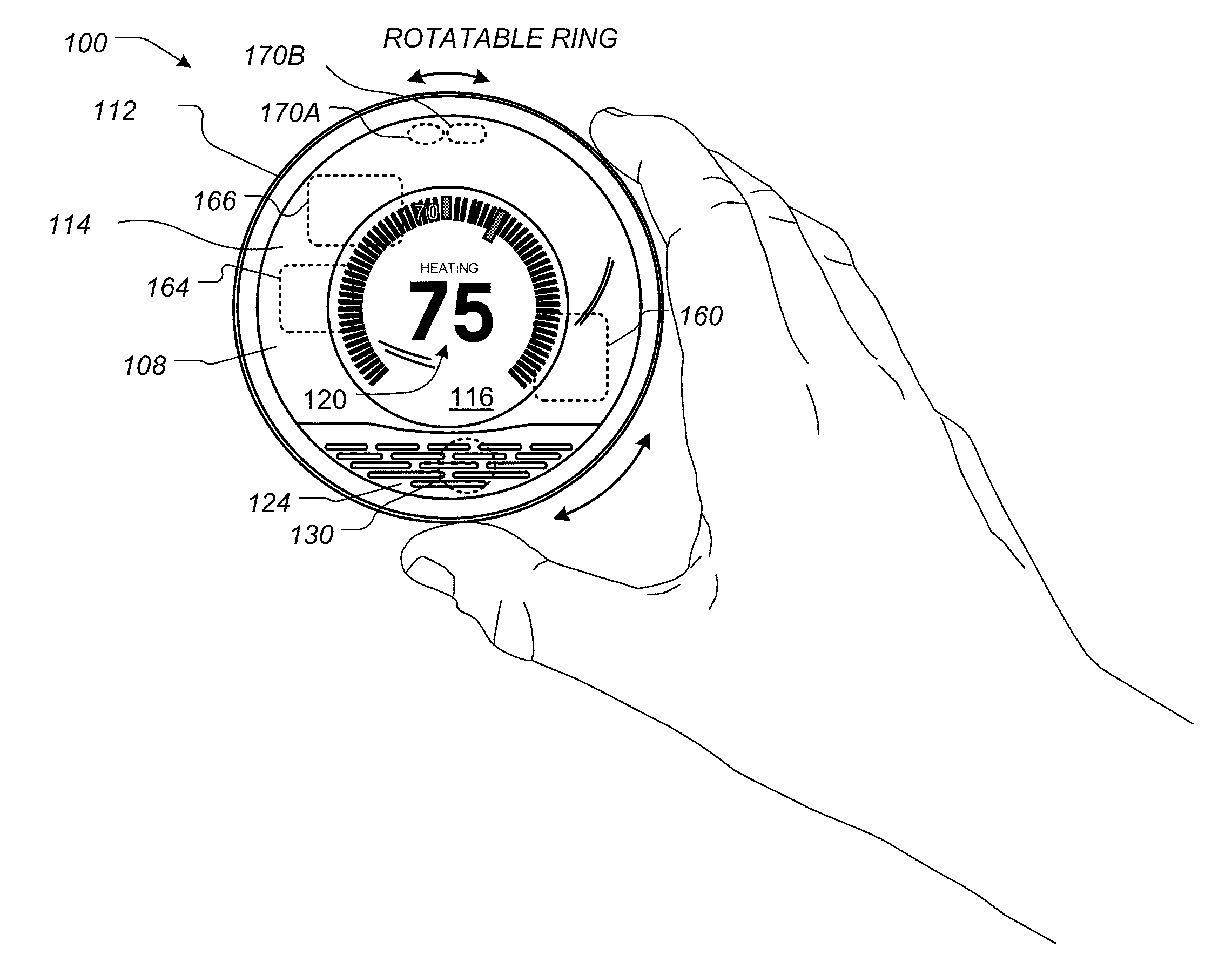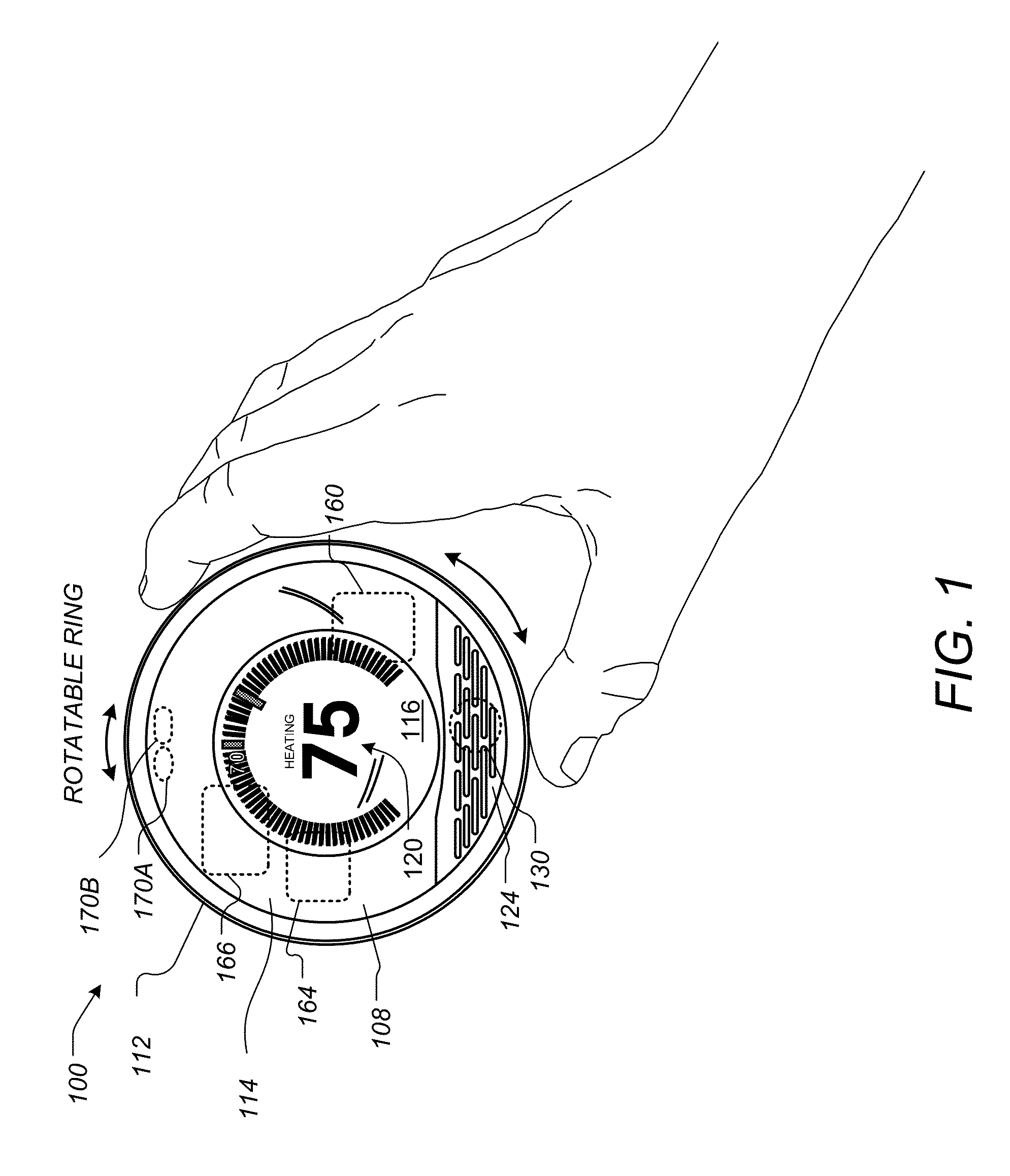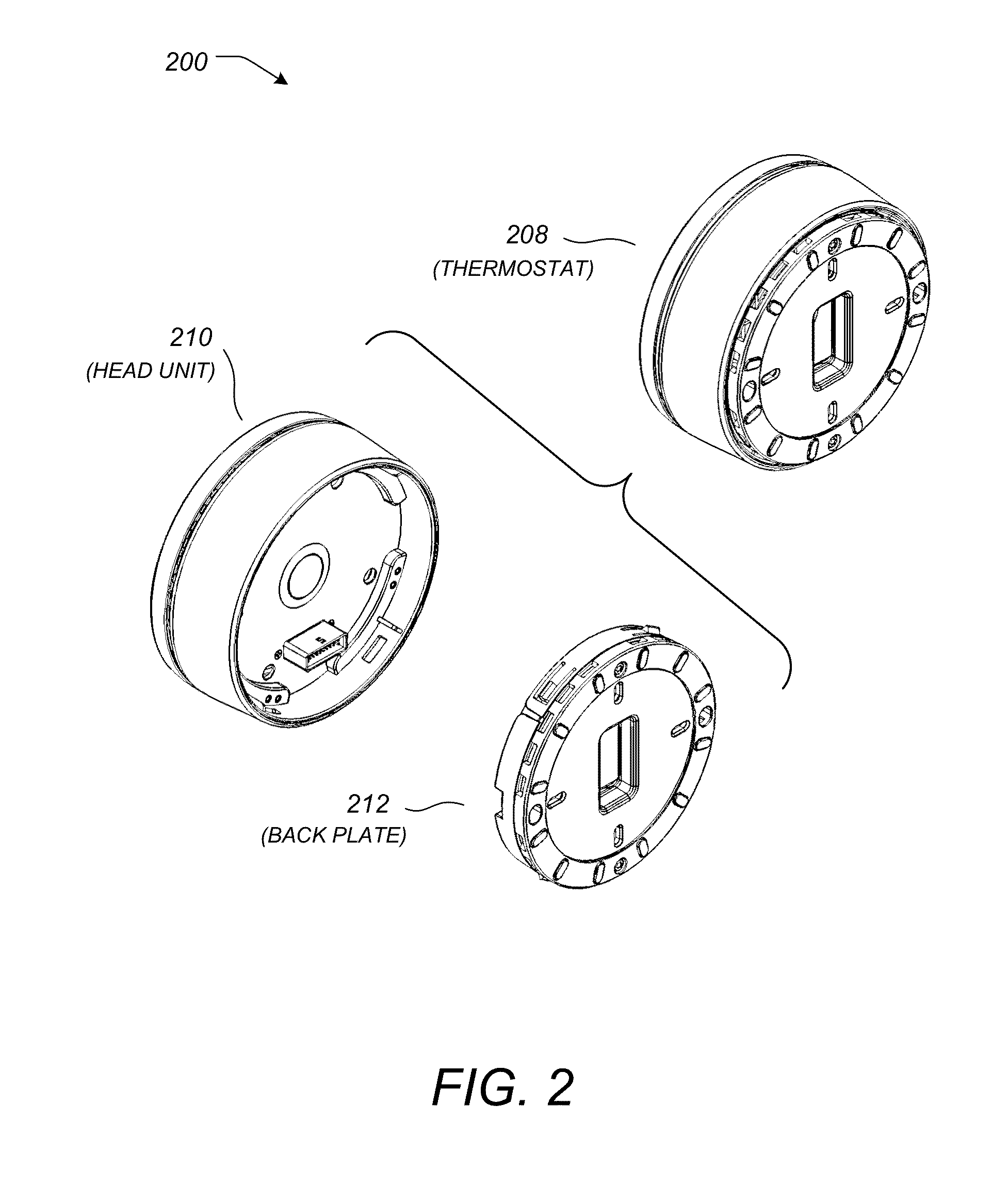Context adaptive cool-to-dry feature for HVAC controller
a technology of hvac controller and cool-to-dry feature, which is applied in the field of control units, can solve the problems of system power storage means, difficult and costly direct hardwiring of a common “c” wire from the transformer to the electronic thermostat, etc., and achieve the effect of reducing the humidity level
- Summary
- Abstract
- Description
- Claims
- Application Information
AI Technical Summary
Benefits of technology
Problems solved by technology
Method used
Image
Examples
Embodiment Construction
[0032]The subject matter of this patent specification relates to the subject matter of the following commonly assigned applications, each of which is incorporated by reference herein: U.S. Ser. No. 13 / 864,929 filed Apr. 17, 2013 (Ref. No. NES0334-US); U.S. Ser. No. 13 / 632,070 filed Sep. 30, 2012 (Ref. No. NES0234-US); U.S. Ser. No. 13 / 624,881 filed Sep. 21, 2012 (Ref. No. NES0233-US); U.S. Ser. No. 13 / 624,811 filed Sep. 21, 2012 (Ref. No. NES0232-US); International Application No. PCT / US12 / 00007 filed Jan. 3, 2012 (Ref. No. NES0190-PCT); U.S. Ser. No. 13 / 466,815 filed May 8, 2012 (Ref. No. NES0179-US); U.S. Ser. No. 13 / 467,025 filed May 8, 2012 (Ref. No. NES0177-US); U.S. Ser. No. 13 / 351,688 filed Jan. 17, 2012, which issued as U.S. Pat. No. 8,195,313 on Jun. 5, 2012 (Ref. No. NES0175-US); U.S. Ser. No. 13 / 632,041 filed Sep. 30, 2012 (Ref. No. NES0162-US); U.S. Ser. No. 13 / 632,028 filed Sep. 30, 2012 (Ref. No. NES0124-US); and U.S. Ser. No. 13 / 632,093 filed Sep. 30, 2012 (Ref. No. N...
PUM
 Login to View More
Login to View More Abstract
Description
Claims
Application Information
 Login to View More
Login to View More - R&D
- Intellectual Property
- Life Sciences
- Materials
- Tech Scout
- Unparalleled Data Quality
- Higher Quality Content
- 60% Fewer Hallucinations
Browse by: Latest US Patents, China's latest patents, Technical Efficacy Thesaurus, Application Domain, Technology Topic, Popular Technical Reports.
© 2025 PatSnap. All rights reserved.Legal|Privacy policy|Modern Slavery Act Transparency Statement|Sitemap|About US| Contact US: help@patsnap.com



